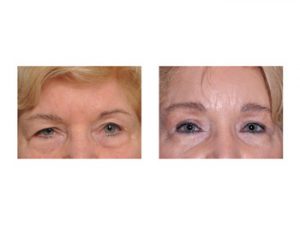Browlift
Browlift
Dr. Barry L. Eppley has years of experience helping patients with eyebrow and forehead concerns. To learn more about this procedure, please read the accompanying information below or call today.
WOULD I BENEFIT BY A BROWLIFT?
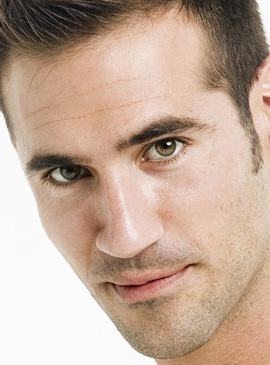
 The perception of the upper third of the face (forehead) is significantly influenced by the position and shape of the eyebrows. There are significant differences between women and men in the aesthetic position and shape of the eyebrow and how it is affected by aging. But when the eyebrow is too low, it impinges on the upper eyelid space creating an appearance of more excessive skin than really exists. In addition, low hanging eyebrows can create a tired, sad, or even angry appearance to the eye area.
The perception of the upper third of the face (forehead) is significantly influenced by the position and shape of the eyebrows. There are significant differences between women and men in the aesthetic position and shape of the eyebrow and how it is affected by aging. But when the eyebrow is too low, it impinges on the upper eyelid space creating an appearance of more excessive skin than really exists. In addition, low hanging eyebrows can create a tired, sad, or even angry appearance to the eye area.
WHAT DOES A BROWLIFT DO?
Browlift surgery is designed to lift and reshape the low hanging eyebrows. In some cases, browlift surgery may also help the vertical wrinkles/folds that exist between the eyebrows and help smooth out some horizontal forehead skin wrinkles as well.
SHOULD I HAVE EYELID SURGERY WITH MY BROWLIFT?
The brows are most certainly connected to the upper eyelids and together with both upper and lower eyelids makes for the facial subunit known as the periorbital area. To no surprise, facial aging affects the entire periorbital area so the assessment of the eyelids must be done with that of the brows. Low hanging brows creates more excess skin in the upper eyelid than may seem to exist so browlift surgery must take into consideration how it will affect the upper eyelid skin. In some cases, a browlift alone solves the upper eyelid skin issue. In most cases, an upper eyelid lift still needs to be done but not as much skin needs to be removed than if it was done alone. In some cases, patients look for complete periobital rejuvenation by having both upper and lower eyelid lifts done with their browlift.
HOW IS A BROWLIFT DONE?
There are four basic types of browlift techniques that have different incision locations and in how well they change the eyebrow/forehead area. Superior browlift approaches include the coronal, hairline (trichophytic) and endoscopic methods. The most common superior browlift techniques today are the hairline and endoscopic.
Endoscopic Browlift
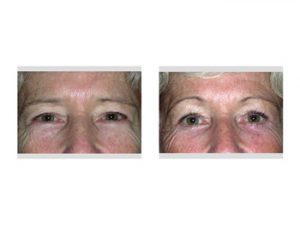 The minimal incision endoscopic method is best for those patients that have a normal forehead height (< 6.5 cms), few forehead wrinkles, and need only a moderate amount of browlifting.
The minimal incision endoscopic method is best for those patients that have a normal forehead height (< 6.5 cms), few forehead wrinkles, and need only a moderate amount of browlifting.
Hairline (Pretrichial) Browlift
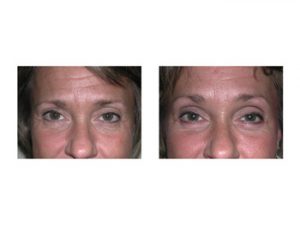
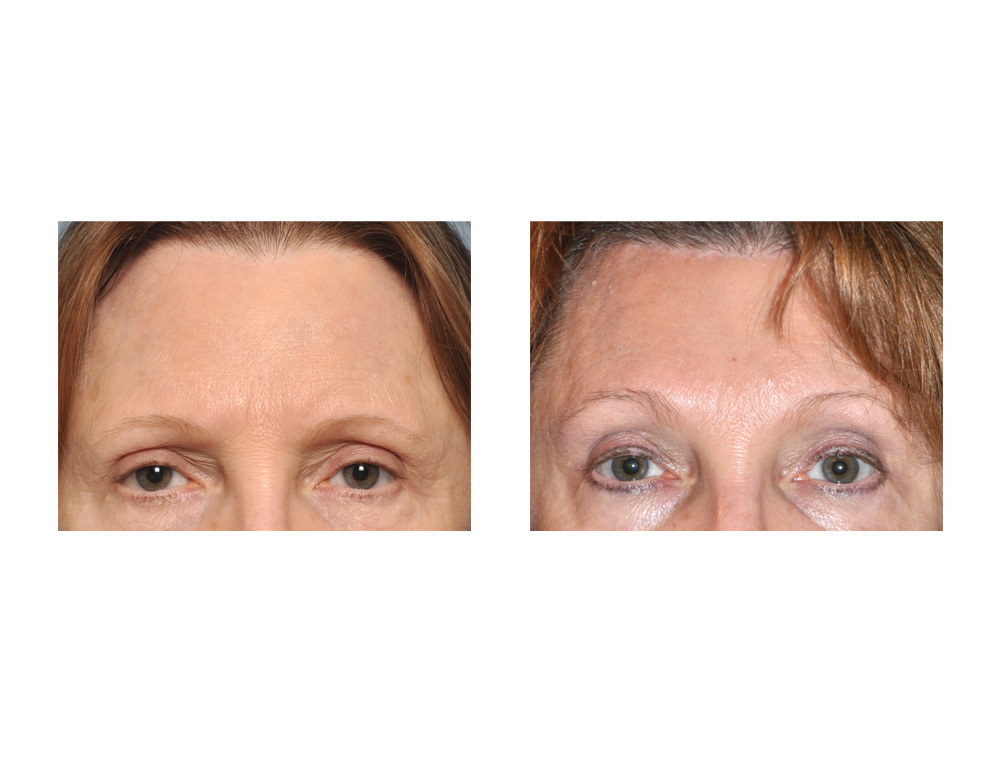 The hairline method is best for those patients that have a long forehead (> 6.5 cms), more prominent forehead wrinkles and need more bidirectional eyebrow changes. (it can shorten the long forehead by simultaneous scalp advancement)
The hairline method is best for those patients that have a long forehead (> 6.5 cms), more prominent forehead wrinkles and need more bidirectional eyebrow changes. (it can shorten the long forehead by simultaneous scalp advancement)
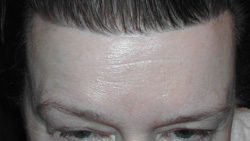
The critical question in a hairline browlift is how does the scar look when it is healed. In most patients it is a very fine line at the edge of the hairline which is largely undetectable.
Transpalpebral Browlift
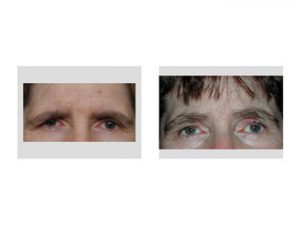 There is also a lower or inferior browlift method done through the upper eyelid known as a transpalpebral browlift. Using a special resorbable device (Endotine), the eyebrow is lifted upward and anchored to the forehead bone with the device. This method is often best for men who often have no place to hide a scalp incision and need only a minimal amount of upward browlift change.
There is also a lower or inferior browlift method done through the upper eyelid known as a transpalpebral browlift. Using a special resorbable device (Endotine), the eyebrow is lifted upward and anchored to the forehead bone with the device. This method is often best for men who often have no place to hide a scalp incision and need only a minimal amount of upward browlift change.
Temporal Browlift
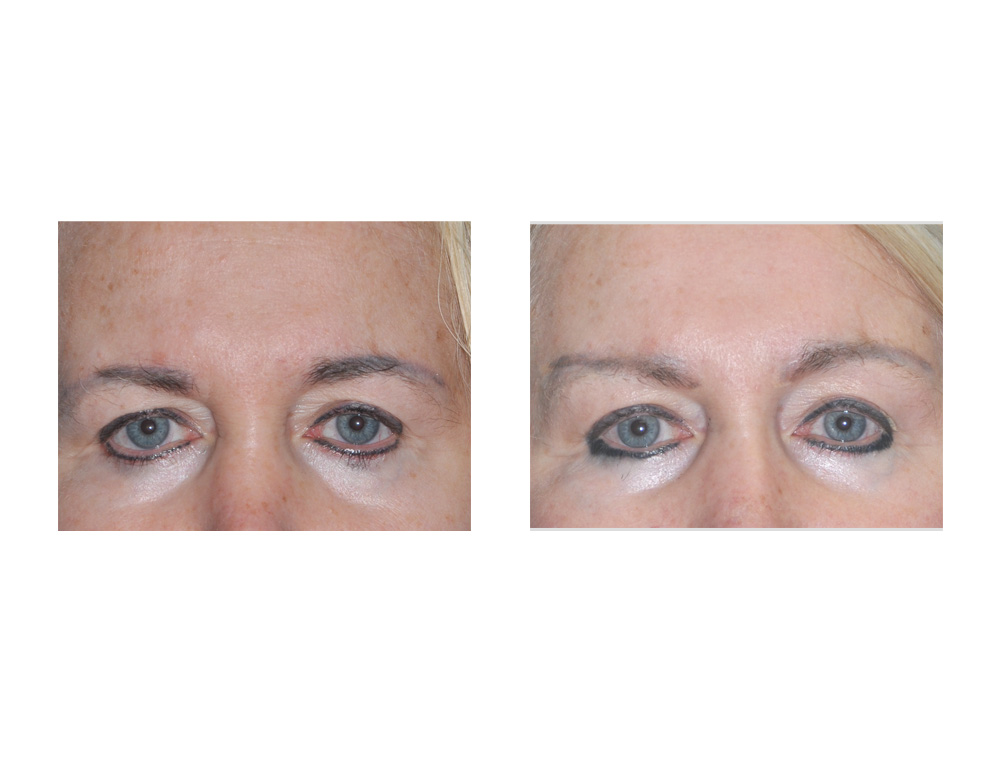
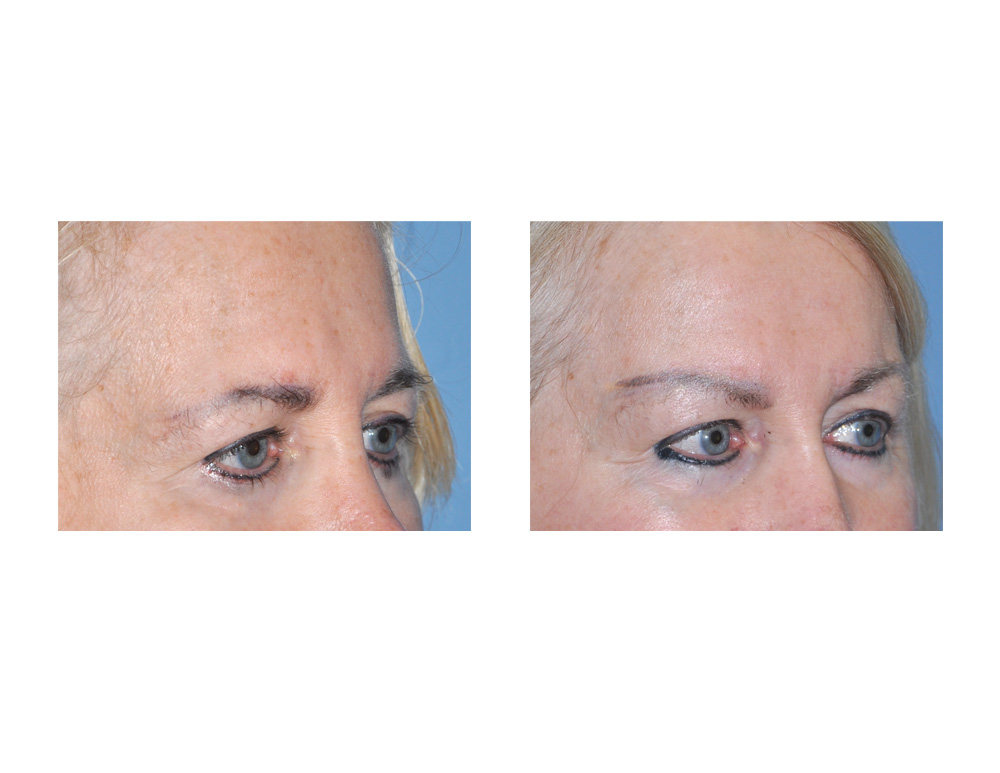 A unique but very effective form of a limited browlift is that of the temporal browlift. This method raises up the outer tail of the brow through small temporal incisions. By lifting up the tail of the eyebrow, hooding of the outer upper eyelids is alleviated and crow’s feet wrinkling on the outer eye skin may be partially improved. This helps open up the eye area for a more rejuvenated look. It is a technique that is almost exclusively done in women who can aesthetically tolerate or even desire an upward swoop to the outer brows.
A unique but very effective form of a limited browlift is that of the temporal browlift. This method raises up the outer tail of the brow through small temporal incisions. By lifting up the tail of the eyebrow, hooding of the outer upper eyelids is alleviated and crow’s feet wrinkling on the outer eye skin may be partially improved. This helps open up the eye area for a more rejuvenated look. It is a technique that is almost exclusively done in women who can aesthetically tolerate or even desire an upward swoop to the outer brows.
Mid-Forehead Browlift
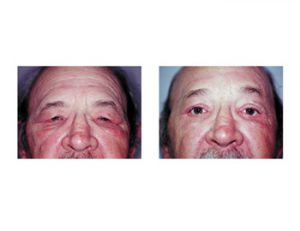 The most uncommon form of a browlift is where the incision is made in a horizontal forehead skin wrinkle line to do the lift. This requires very deep prominent forehead wrinkle(s) and is exclusively used in older men with severe brow sagging and the hairline (or lack thereof) offers no place to hide a scar.
The most uncommon form of a browlift is where the incision is made in a horizontal forehead skin wrinkle line to do the lift. This requires very deep prominent forehead wrinkle(s) and is exclusively used in older men with severe brow sagging and the hairline (or lack thereof) offers no place to hide a scar.
In addition to helping eyelid surgery and browlift patients, Dr. Eppley offers a variety of surgical and non-surgical treatments for the face. He has extensive experience helping face lift, rhinoplasty and Botox patients with their aesthetic needs.
Before Browlift Surgery
A thorough examination of the eyebrows, forehead, eyes and cheeks is initially made and photographs taken. The length of the forehead, the amount of eyebrow sagging (ptosis), and the amount of excess skin and fat of the eyelids is recorded and the various surgical options for correction of the problem is discussed. An examination by an ophthalmologist may be recommended if one has symptoms of loss of the upper visual fields, dryness or itchiness of the eyes, or problems with their vision. This examination must be completed prior to surgery.
The main surgical options to be considered include elevation of the eyebrows through small incisions in the scalp through a specially designed scope (endoscopic forehead lift), elevation of the eyebrows and forehead through an incision along the frontal hairline (pretrichial forehead lift), or elevation of the brows through the eyelid approach (transbleparoplasty or transpalpebral browlift), or combinations of any of these procedures. Which browlift technique is best require thorough discussion of each of their advantages and disadvantages.
Many browlifts are done concurrently with eyelid surgery to create a more complete eye area change. A browlift done without eyelid surgery is much more uncommon that one done with eyelid surgery. Total eye area or periorbital rejuvenation consists of a browift and upper and lower blepharoplasties.
Medications that contain aspirin are to be discontinued two weeks prior to surgery to decrease the possibility of excess bleeding during or after surgery.
Cosmetic Procedures – Browlift – Operation
Browlift surgery, regardless of technique, is always done under general anesthesia as an outpatient procedure. Prior to surgery, markings are made in the scalp or along the hairline or eyelids for the incisions as well as the direction or vector of desired eyebrow movement. The procedure may be performed either one of three ways; an incision along the frontal hairline from temple to temple (pretrichial forehead lift), through four small one inch incisions within the frontal and temporal scalp (increasingly popular endoscopic forehead lift), or through the upper blepharoplasty incision (usually on in men with receding or absent hairlines). In the hairline forehead lift, excess forehead skin is removed along the incision and then closed. In the endoscopic forehead lift, no scalp skin is removed (only shifted upward) and the brows and forehead are sutured up from underneath the skin. In the browlift through the eyelid, the brow is sutured higher up along the brow bone using the bone anchored Endotine device.
Scalp, hairline and eyelid incisions are closed with sutures that will be removed later. A circumferential wrap will be applied around the forehead to keep early pressure on the new forehead and eyebrow position.
Browlift Recovery
The circumferential head dressing applied to keep some pressure on the scalp and forehead tissues can be removed the next day after surgery. Cool compresses are to be used on the eyes for the first day after surgery, particularly if blepharoplasty surgery was done at the same time. Considerable eyelid swelling and some bruising around the eyes and even into the cheeks should be expected. Sutures will be removed seven to ten days after surgery. Makeup can be applied one week after surgery. Complete clearing of all swelling and bruising may take up to three weeks to occur.
Complications associated with browlift surgery are uncommon. The most severe is over elevation of the eyebrows which usually will relax and drop down to a better aesthetic position a few weeks or months after surgery. Numbness of the forehead and scalp is to be expected which will take months to significantly improve. Complete return of feeling to the front part of the scalp may not occur in long incisional scalp and hairline browlift techniques. Endoscopic browlifts have a much return of feeling and very low risk of any permanent numbness due the minimal incisions. Subtle differences in position of the eyebrows or eyebrow symmetry is not uncommon.

North Meridian Medical Building
Address:
12188-A North Meridian St.
Suite 310
Carmel, IN 46032
Contact Us:
Phone: (317) 706-4444
WhatsApp: (317) 941-8237
